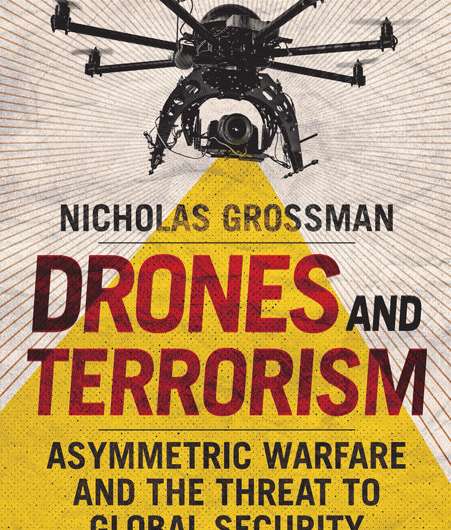How are drones changing warfare, threatening security?

The Trump administration recently announced a new policy that could vastly expand the sale of armed aerial drones, a specialty of Nicholas Grossman. The professor of political science at the University of Illinois teaches international relations and is the author of the new book "Drones and Terrorism: Asymmetric Warfare and the Threat to Global Security." He spoke with News Bureau social sciences editor Craig Chamberlain.
These weapons have given the U.S. a high-tech advantage on the battlefield and in counterterrorism, where their use has also often been controversial. Should we be concerned about a policy that allows for their wider sale to other countries?
Expanding drone sales is not especially concerning for American security. The United States will still limit sales to allies and not allow sales of the most advanced models, some of which remain classified.
However, for those concerned about armed drones in general, it's reasonable to be wary, because this demonstrates that many countries plan to launch missiles from unmanned aircraft. Some of those countries will be less concerned with avoiding civilian casualties when firing at suspected terrorists, and some may use American-made drones for other purposes, such as domestic surveillance.
That being said, Israel, India, China, Turkey, Iran and others produce drones similar to the models American companies sell. The United States restricting drone sales will not prevent other countries from acquiring them.
What developments in the use of drones do you think might surprise people?
Most people focus on governments deploying drones, but terrorists, insurgents and other nonstate actors are using them as well.
Hezbollah acquires advanced models from Iran and is one of only 10 entities that have fired missiles from a drone at targets on the ground. The other nine are all countries.
The Islamic State group buys small drones on the commercial market and adapts them for military use. The same $1,000 quadcopter models that businesses and hobbyists use for aerial photography can be used for battlefield surveillance. And in Iraq, Islamic State jury-rigged some of these small drones to drop bombs on U.S.-backed Iraqi and Kurdish forces, or to crash into them in a kamikaze-style attack. For the first time in history, insurgents can have an air force.
The growing commercial drone market also creates concerns that terrorists will deploy them in the United States and other developed countries. Small, reasonably priced drones couldn't take down a building, but they could carry a grenade-sized explosive, which weighs about the same as a camera. Governments are insufficiently prepared for this danger.
How do you foresee the future military development and use of drones, and what's driving it? How might it change military strategy and political decision-making?
Drones will continue advancing, taking on an increasing number of military tasks. Some will start partnering with humans, increasing what one person can do on the battlefield. Some examples in development include a fighter pilot surrounded by a few semiautonomous support drones, a squad of soldiers with robotic pack mules to speed movement and small surveillance drones to help troops avoid ambushes. War is becoming robotized.
These developments allow advanced militaries to act faster and more precisely, and reduce the risk to personnel. That means fewer combat deaths on "our" side and fewer civilian deaths on "their" side, both of which are positive developments. As a result, technologically advanced countries such as the United States will be able to sustain counterterrorist and counterinsurgency missions – such as the war in Afghanistan – for a longer time at lower cost, increasing the chances of victory.
However, there's a risk this undermines public influence over governments' use of force. The more states fight with drones, the less they need people to sacrifice. That separates democratic publics from the costs of war, reducing governments' need to get their people's permission before using force in their name, which is potentially problematic.
What are your greatest concerns related to the future development of this technology? And what policies or measures should we consider as a result?
I have two main concerns, the first of which is the increasing autonomy of military drones. As artificial intelligence advances, drones will be able to take on more tasks without human direction. It is inevitable some will be capable of deciding to attack targets on their own. However, killing a human being is a grave decision, and it is important people remain a part of it.
My second concern is terrorists adapting commercially available drones to monitor and attack civilian targets. To protect against that, I recommend developing counterdrone measures. Some companies already make anti-drone nets, which are fired from something that looks like a hand-held bazooka on the ground or are dropped from an anti-drone drone in the sky. France and the Netherlands have begun training eagles to knock down drones in restricted areas.
However, my main recommendation would be electronic measures that send signals to nearby drones, forcing them to turn around or land. That way, instead of having to spot a potentially dangerous drone and deploy nets, eagles or something else, the defenses would protect a building, bridge, base, etc. 24/7 – without having to spot a drone first.
Provided by University of Illinois at Urbana-Champaign




















